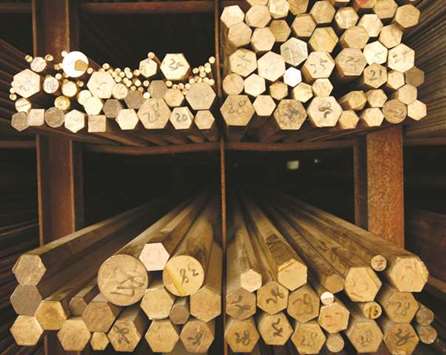Unionised workers at the Quebrada Blanca copper mine in Chile walked off the job last week after failing to agree on a new labour contract.
It’s the third strike at a South American copper operation in almost as many weeks.
A three-week strike at Southern Copper’s Peruvian operations has just ended, while one of the unions at the giant Escondida mine in Chile held a one-day “warning” strike on November 23.
None of this labour strife has had much discernible impact on the copper price.
That’s partly because any bullish enthusiasm about fundamentals has been overwhelmed by a mass exodus of fund money over the last couple of weeks.
Funds have slashed their collective net long positioning on the COMEX copper contract from over 125,000 contracts at the start of September to a current 48,384.
And in part it’s because in all three cases only one of several unions has been involved, allowing operators to minimise the impact on production. However, it’s an early sign of what is likely to be a defining feature of the market next year as an unusually high number of labour contracts come up for renewal.
According to analysts at Citi bank, there are over 30 labour contracts, covering around five million tonnes of mine supply, due to expire next year, most of them in Chile and Peru. (“Global Commodities Focus”, December 2017).
Analysts at Barclays Capital come up with even more contracts, 38, covering even more production, over seven million tonnes, by including a batch of contracts expiring this month.
The number of labour contracts due for renewal is the largest since 2010, according to Barclays.
“To give context, from 2011 to 2016, the average amount of supply at risk from contract renewal disputes averaged 1.69mn tonnes with an average of 12 contracts up for renewal,” the bank notes.
The list of potential disruptions ahead includes some of the world’s largest copper mines.
Antamina and Cerro Verde in Peru, with output of 430,000 tonnes and 520,000 tonnes last year respectively, will see contracts expire in July and August.
In Chile, state-owned Codelco alone has 19 contracts up for renegotiation across its divisions, according to Barclays.
But looming largest of all is Escondida, where the deadline is the end of June.
Escondida experienced a 44-day strike in the first quarter of this year, cutting production by 214,000 tonnes, according to operator BHP Billiton. This is the world’s largest single mine and the walk-out depressed Chile’s overall copper production profile.
National output fell by 14% in the first quarter and although the impact has since faded, Chilean production is still playing catch-up with cumulative output through October 2% off last year’s pace.
The strike also affected broader market sentiment, refocusing attention on copper’s notoriously disruption-prone supply chain and laying the foundations for London three-month metal’s subsequent third-quarter ascent to the $7,000-per tonne level.
Critically, however, the walk-out ended with absolutely zero resolution of the underlying differences between management and unions. Unions invoked a rarely used provision of Chilean labour law, Article 369, to extend the old contract with its existing terms.
They did so because BHP Billiton wouldn’t budge on any of the core points of dispute and because a new law, effective last April, tilts the playing field in the unions’ favour by forcing companies to offer the minimum benefits of the previous contract in any new contract.
From the unions’ perspective, the call to end the strike was no more than a strategic retreat ahead of renewed battle this year. Indeed, skirmishing has already started, judging by the one-day walk-out to protest against 120 job cuts, which union leaders view as a “reprisal” for this year’s stoppage.
The political climate in Chile has just changed again with the election of conservative Sebastian Pinera as the country’s president. But facing a divided Chilean Congress and a leftist coalition that has already pledged to defend the legacy of outgoing President Michelle Bachelet, the chances of Pinera revoking the new labour laws before Escondida’s mid-year contract deadline look thin.
There may be one or two obvious flash-points on the labour contract horizon such as Escondida, but no-one is suggesting there will be 30 plus strikes next year.
However, the sheer number of contract renewals will at the very least generate a continuous stream of bullish media headlines and analysts are already adjusting their “disruption allowances” in calculating next year’s copper market balance.
* Andy Home is a columnist for Reuters. The opinions expressed here are those of the author.

Funds have slashed their collective net long positioning on the COMEX copper contract from over 125,000 contracts at the start of September to a current 48,384


